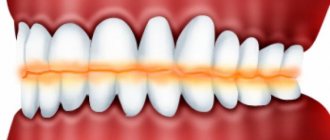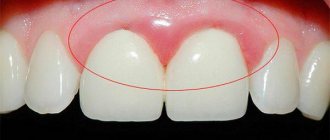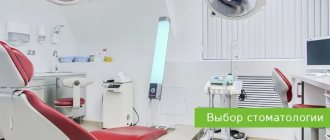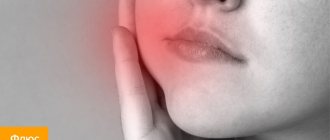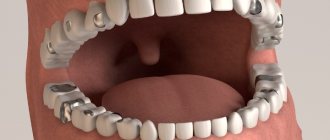Correction of dry nasal mucosa
Most modern people quite often experience unpleasant sensations characterized as “dryness of the nasal mucosa.” It is expressed in nasal congestion, often alternating, itching, burning, crusting in the nasal cavity, and decreased sense of smell. In addition to the feeling of discomfort, dryness of the nasal mucosa negatively affects the filtration function of the nose - dust particles, bacteria and viruses contained in the air almost freely enter the lungs during breathing.
Various factors can lead to dryness of the nasal mucosa. Quite often, “dry nose” is a side effect of certain medications, primarily antihistamines and drugs containing atropine. The most common is the adverse effects of climate and ecology, staying in rooms with central heating and air conditioning. The humidity of the nasal mucosa is negatively affected by inhalation of hot air, in particular from smoking, rarefied air (during air travel and vacations in the mountains), dust in the air in a number of industries - cement, chemical, etc. In addition, this condition can also be a symptom of a general disease.
The mucous membrane of the nasal cavity is covered with a special ciliated epithelium, consisting of ciliated cells that ensure the transport of mucous secretions (Fig. 1).
Ciliated cells have 250–300 cilia, 7 microns long and 0.3 microns high. Each cilium consists of 9 pairs of microtubules arranged in a ring and surrounding two unpaired central microtubules. The movement of the cilia of the ciliated epithelium of the nasal mucosa is carried out through the sliding of microtubules (Satir P., 1974). Energy for movement is provided by ATP, which is broken down by dynein. Dynein is a Ca/Mg-dependent ATPase. The motor cycle begins with the addition of ATP to the dynein molecule. Cleavage of the phosphate ring during ATP hydrolysis leads to the connection of the dynein molecule and the tubulin molecule of the adjacent outer doublet and is accompanied by conformational changes in the dynein molecule - bending and displacement of the microtubule at a certain distance. This, in turn, causes a new ATP molecule to attach to dynein and break its bonds with tubulin, causing the dynein handle to return to its original shape. The whole cycle is repeated again (Kiselev A.S., Tkachuk I.V., 2006).
The movement of the cilia is strictly directed - from the vestibule of the nasal cavity towards the nasopharynx. Mucociliary clearance is provided by nasal secretions. The source of the secretion covering the epithelium of the nasal cavity is the mucous glands of the nasal mucosa, goblet cells, extravasation from subepithelial capillaries, lacrimal glands, and the secretion of specialized Bowman glands from the olfactory zone of the nose. The volume of nasal secretion in 24 hours ranges from 100 ml to 1–2 liters. The mucous membrane of the posterior two-thirds of the nose is renewed every 10–15 minutes. The function of the cilia is optimal at a temperature of 28–33 °C, a sufficient amount of secretion with a pH of 5.5–6.5. Loss of moisture, a decrease in temperature to 7–10 °C, and an increase in the pH of the secretion to more than 6.5 causes the cilia to stop vibrating.
Elimination of dryness of the nasal mucosa is facilitated by applying an isotonic solution to it. At the same time, the rheological properties of mucus are normalized. It is believed that trace elements contained in an isotonic solution, such as Ca, Fe, K, Mg, Cu, help to increase the motor activity of cilia, activate reparative processes in the cells of the nasal mucosa and normalize the function of its glands. The listed microelements are contained in preparations that are prepared from sea water, sterilizing it and bringing the salt content to isotonic concentration (Otrivin More, Marimer, Aqua Maris, Salin, etc.), and from mineral spring water, which has medicinal properties (salt).
One of the new drugs in this group is Otrivin More, which is a purified, disinfected isotonic solution of ocean water from Brittany, extracted in an ecologically clean area of the Atlantic Ocean, rich in natural microelements. It contains 18 minerals and trace elements.
We examined and treated 50 patients of both sexes aged from 21 to 43 years with complaints of “dry nose” caused by prolonged stay in rooms with dry and/or rarefied air. In the treatment of the main group (25 patients), Otrivin More was used in the form of irrigation of the nasal mucosa 2 times a day for 10 days; in the second (control) group (25 patients), an oil solution of tocopherol acetate and retinol palmitate in the form of drops 2 times a day. The distribution of patients by gender and age, as well as by the severity of clinical manifestations in both groups was comparable. Every three days, the dynamics of the main symptoms were assessed: difficulty in nasal breathing, dryness in the nasal cavity (including the patient’s subjective sensations), the nature and amount of nasal discharge, the state of mucociliary transport (saccharin test).
At the end of the course of treatment, a positive clinical effect was obtained in 42 patients, of which 23 were from the main group and 19 from the control group. In 8 (16%), including 6 from the control group (24%), no positive dynamics were recorded. In the group of patients receiving Otrivin More, the regression of pathological signs was significantly more rapid compared to the control group, which was confirmed by the results of a study of mucociliary transport. On average, the decrease in mucociliary transport time with the use of the drug was 6.9 minutes. In the control group, this figure was 4.3 minutes (Fig. 2).
Changes in mucociliary transport parameters correlated with rhinomanometry data and changes in the clinical picture, which took into account subjective symptoms assessed using a patient questionnaire. The drug was well tolerated by all patients. In addition, all patients noted the ease of use of the drug, while the use of oil drops by the majority of patients in the second group (24 people) was characterized as “inconvenient.”
Thus, Otrivin Sea can be recommended as a means for caring for the nasal cavity not only for patients with rhinitis, including atrophic ones, but also as a means of daily hygienic care for the cavity during the heating season, as well as for people who stay in dry rooms for a long time. and/or rarefied air.
Literature
- Satir P. How cillia move // Scientific American. 1974. Vol. 231. P. 45–46.
- Kiselev A. S., Tkachuk I. V. Spray Aqua Maris for diseases of the nose and paranasal sinuses // Pharmacy Weekly. 2006, March 27, No. 12 (533).
O. V. Zaitseva , Candidate of Medical Sciences, National Research Center of Otorhinolaryngology, Federal Medical and Biological Agency of Russia , Moscow
Vitamins that protect the body in general and mucous membranes in particular
Severe deficiency of any vitamin negatively affects the immune response, since each of the essential micronutrients is included in several biochemical cascades at once. For example, deficiency of vitamin C causes scurvy, B12 – corresponding anemia, which is accompanied by a significant decrease in protective functions. In this context, the optimal means of increasing the body's defenses are multivitamin complexes. However, some nutrients play a special role in the formation of the immune response, let's talk about them in more detail.
Drug treatment
Vasoconstrictors (decongestants) are drugs that have a local effect. When used, there is a quick and effective reduction in the swollen vascular networks of the nasal cavity and easier nasal breathing. These medications can be purchased without a doctor's prescription. There are many trade names, but there are only three active ingredients: oxymetazoline, xylometazoline, phenylephrine.
Kraurosis of the vulva
Kraurosis of the vulva is a chronic, difficult-to-treat pathology in women, characterized by slowly progressive atrophy of the skin and mucous membranes of the external genitalia.
Changes in the epidermis with kraurosis of the vulva resemble the histological picture of lichen sclerosis, so experts often combine these concepts. The term also has other synonyms: lichen sclerosis, lichen sclerosis, white lichen of Tsumbusha. According to ICD 10, kraurosis of the vulva in gynecology has code L90.4.
The disease mainly affects women of pre- and postmenopausal age.
When is Methyluracil indicated?
The product is approved for use from 3 years of age. Methyluracil tablets are prescribed:
- with leukopenia that has developed due to X-ray irradiation, radiation therapy, or exposure to medications;
- with radiation sickness;
- in case of intoxication with benzene derivatives and other chemicals;
- for long-term infections;
- for indolent gastritis, pancreatitis, and other gastrointestinal diseases;
- with anemia.
Suppositories Methyluracil are used in proctology and gynecology:
- for proctitis, rectal fissures, chronic hemorrhoids;
- with inflammatory and infectious processes of the vaginal mucosa, cervix;
- with local dysbacteriosis: as a result of the use of antibiotics, systemic disorders;
- after treatment of ectopia and cervical dysplasia.
Medicinal ointment is used to heal superficial wounds and cracks.
If necessary, Methyluracil can be used in the treatment of pregnant women and breastfeeding.
Vulvovaginitis: drugs
Local and oral agents are used for treatment.
Vaginal suppositories and creams (Gynex, Clotrimazole, Lomixin) are indicated as local ones. Doctors also prescribe a course of tablet antibiotics (Pancef, etc.). For candidal etiology, antifungal agents are prescribed: Nystatin, Fluconazole, Itraconazole, Metronidazole.
Upon completion of treatment, doctors recommend taking probiotics (Lactozhinal, etc.) to restore the microflora.
If the cause of the disease is worms, anthelmintic drugs are needed: Aldazole, Pirantel.
Development of addiction and dependence
Unfortunately, few people pay attention to the instructions and warnings that long-term use (more than 5-7 days) of these products can be addictive. Thus, after the end of the course of treatment, the congestion will return again, and in order to relieve it, you need to spray the product into the nose again. This effect in medicine is called “tachyphylaxis”, in other words, a boomerang effect, when, after the end of the action, recurrent nasal congestion occurs. As a result, the congestion does get relieved with the spray, but as soon as you stop using it, it comes back.
How does Methyluracil work?
The active component of the drug, when in contact with the surface of the skin or mucous membranes, prevents the development of pathological processes, affects rapidly proliferating cells, favors cellular and humoral immune factors, protects tissues from damage by aggressive substances and radiation, helps fight leukopenia and neuropenia during chemotherapy.
When taken orally, Methyluracil accelerates the healing of erosive damage to the gastrointestinal tract, eliminates inflammatory pathologies, stimulates bone healing in fractures, and restores the normal blood formula. Local forms of the medication help heal non-healing wounds, accelerate recovery from infectious lesions, and prevent secondary infections from occurring during injuries and after surgical treatment.
Vitamin D
Another fat-soluble vitamin that has a significant effect on the functioning of the immune system is vitamin D. It is known that it [4]:
- stimulates the activity of macrophages;
- induces differentiation [maturation] of immune cells;
- increases monocyte proliferation;
- increases the activity of T-regulatory cells, which regulate the strength and duration of the immune response;
- reduces the production of pro-inflammatory cytokines;
- increases the synthesis of antimicrobial peptides.
It has been proven that with a vitamin D content of more than 50 ng/ml in the blood plasma, the likelihood of developing respiratory infections is 27% lower than with severe deficiency [vitamin D level less than 20 ng/ml] [5]. At higher concentrations of the vitamin in the blood, the risk of developing influenza, respiratory syncytial virus infection, and pneumonia is reduced [6]. The decrease in the likelihood of developing the latter is associated with the beneficial effect of vitamin D on the respiratory tract: it reduces the production of cytokines in epithelial cells, reducing the severity of inflammation, and blocks the proliferation of smooth muscles of the respiratory tract [7].
The daily dose of vitamin D is 600-800 IU. For pregnant and lactating women it reaches 800-1200 IU, and for people over 50 years old 800-1000 IU.
Frequently asked questions about vulvar kraurosis
What causes kraurosis of the vulva?
The exact causes of the disease have not yet been established. It is assumed that viruses and infections, hormonal changes, disruption of the endocrine system, and autoimmune processes can serve as trigger factors.
How can I tell if I have vulvar kraurosis?
The main symptoms of the disease are itching, dryness, pain in the vestibule of the vagina, tightening of the skin of the perineum. Over time, the clitoris becomes smaller, the labia minora becomes thinner, the entrance to the vagina narrows, and the tissues atrophy.
Is it possible to cure lichen sclerosus?
The disease cannot be completely cured, but properly selected therapy can eliminate unpleasant symptoms and improve a woman’s quality of life.


